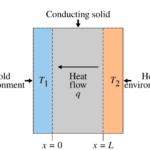Thermal Energy & Heat Transfer
Thermal energy is the energy of moving particles; heat transfer is how that energy moves from hotter objects to cooler ones.
- All matter is made of constantly moving particles — the faster they move, the hotter the object.
- Heat always flows from a warmer object to a cooler one.
- There are three main types of heat transfer: conduction, convection, and radiation.
- These happen in solids, liquids, gases — even in space!
Real-world examples include using a stovetop to boil water (conduction and convection) and wearing dark clothes on a sunny day to absorb more heat (radiation).
Types of Heat Transfer
Each type of heat transfer works differently, but they all move thermal energy!
- Conduction: Heat moves through direct contact. A metal spoon in hot soup is an example—metal is a good conductor.
- Convection: Heat moves through fluids (liquids and gases). Warm air rises because it becomes less dense than cooler air, creating a flow.
- Radiation: Heat moves through space by electromagnetic waves. This is why we feel the sun’s heat even though space has no air.
Real World Example
Inside a parked car on a sunny day, all three types of heat transfer occur together — making it a perfect demonstration of conduction, convection, and radiation.
- Radiation: Sunlight enters through the car windows, heating the surfaces inside the car.
- Conduction: When you touch the dashboard, seats, or metal parts, their heat transfers directly to your skin or other surfaces.
- Convection: As the air inside the car heats up, it rises, and cooler air circulates below, creating convection currents inside the enclosed space.
Fun Facts
Here are some interesting facts about heat transfer:
- Birds fluff their feathers to trap air and slow heat loss (reducing conduction).
- Microwaves use radiation to heat food from the inside out.
- Your jacket keeps you warm by stopping convection currents.
- The Earth’s atmosphere traps heat from the sun through radiation and convection, which is part of the greenhouse effect.
Review
Let’s quickly recap what we learned about heat transfer:
- What kind of heat transfer needs direct contact? Conduction
- What heat transfer moves in liquids and gases? Convection
- What type of heat transfer comes from the sun? Radiation
- What do moving particles create? Thermal Energy


Recent Comments